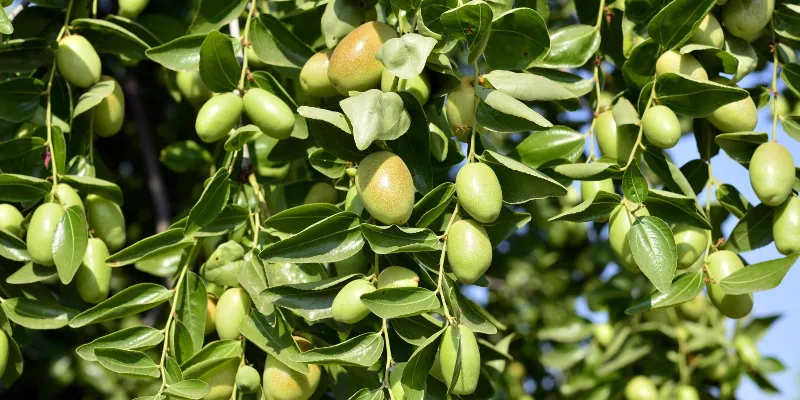No products added!
- Home
- Shop by Concern
- Vegan
- Skin
- Hair
- Lip
- Foot
- Baby
- Oils
- Combos
- About
Menu
- Home
- Shop by Concern
- Vegan
- Skin
- Hair
- Lip
- Foot
- Baby
- Oils
- Combos
- About
Menu
0
No products added!

Jojoba
Synonyms: none
Scientific Name: Simmondsia chinensis
Family: Simmondsiaceae
Habitat
Desert regions of Mexico, California and Arizona.
Constituents
Nuts: 50 to 60 % liquid wax (wax that is liquid at room temperature), provitamin A and vitamin E.
Description
Jojoba is a real marvel in dealing with extremes. The evergreen shrub which can reach a height of up to 10 feet/3 meters grows in desert regions with night time temperatures between 32 and 44°F /0 and 5°C and daytime temperatures of up to 113°F/45°C. It can only survive these conditions with the help of its tap roots which grow to a depth of up to 13 feet/4 meters and draw water from the deepest layers of the earth and through its leaves which are specially adapted to cope with the dryness. The woody shrub has long narrow leaves with a leathery surface and hairy covering which help prevent water loss. The plant is dioecious. That means there are male plants that produce pollen and female plants that produce inconspicuous flowers which develop into the brown, acorn-shaped jojoba nuts after wind-pollination. In spite of their extreme habitat jojoba bushes can become as old as 200 years.
Uses
Jojoba oil is an excellent oil for skin care which protects the skin from drying out by covering it with a breathable, non-sticky, non-greasy film which also provides antioxidant protection. It smoothes and moisturizes the skin making it soft and supple. Having a structure similar to that of the sebum in the skin it can penetrate into the deeper layers. Jojoba oil helps balance the excessive sebum in oily skin. It also has soothing action for irritated skin. But jojoba oil can do even more: it is used as a substitute for spermaceti, an oil obtained from the heads of sperm whales which used to be used as lubricant for precision instruments and as raw material in the chemical, pharmaceutical and cosmetic industries but is now prohibited under wildlife conservation statutes. Transformed into hard wax, jojoba oil is used as a base for creams and for soft, white waxes used to make polishes, e.g. for furniture, floors and cars.
A new and promising application which Arabic scientists are currently working on is use of jojoba oil as a substitute for diesel fuel. Because of its lower carbon content the non-toxic and sulphur-free jojoba oil releases less carbon monoxide and carbon dioxide on combustion than conventional diesel fuel. And it does not produce any dangerous sulphur compounds or soot. There are many more advantages that could be mentioned, conjuring up visions of all the desert regions of the earth being planted with jojoba bushes. Apparently a start has already been made in Egypt.
Interesting Facts
The name jojoba was derived by the Spaniards from the word jojowi in the language of the Papago of North America. The scientific name Simmondsia was chosen in honour of the natural scientist F.W. Simmonds. Its scientific name used to be Buxus chinensis. The designation chinensis is the relic of a mistake: originally it was thought that the jojoba bush came from China. This name is still found today in the lists of ingredients on skin care products, the so-called INCIs.
The jojoba oil obtained from the nuts was used in many ways by different indigene people of North America. The Apache used the oil to treat pain while Papago used it for stomach disorders. Jojoba oil played an important role in skin and hair care. The edible Jojoba nuts were used raw or roasted as ingredients for various dishes or ground to make beverages. Jojoba did not reach Europe until the 18th century.
Through its special wax-like structure jojoba oil cannot oxidize and therefore has considerably less tendency to become rancid than other oils. It can withstand temperatures of up to 572°F/300°C.
The jojoba bush provides important protection against soil erosion in the extremely dry regions where it grows.
The Plant in our Products
Bask in Nature’s products containing Ingredients from Jojoba Tree :
-
Rated 4.86 out of 5(7)₹685 – ₹1065Select options This product has multiple variants. The options may be chosen on the product page
-
Rated 5.00 out of 5(13)₹545Select options This product has multiple variants. The options may be chosen on the product page